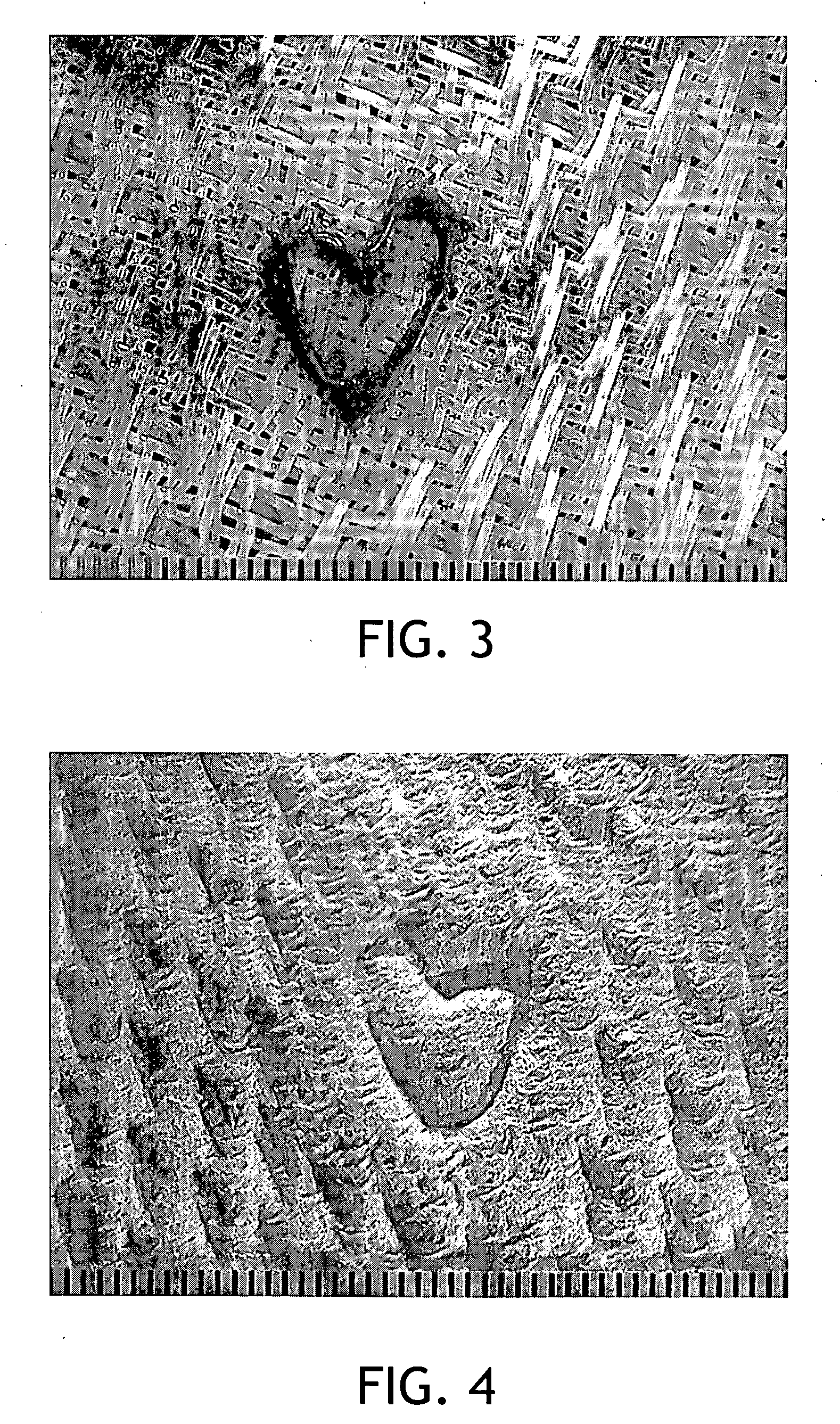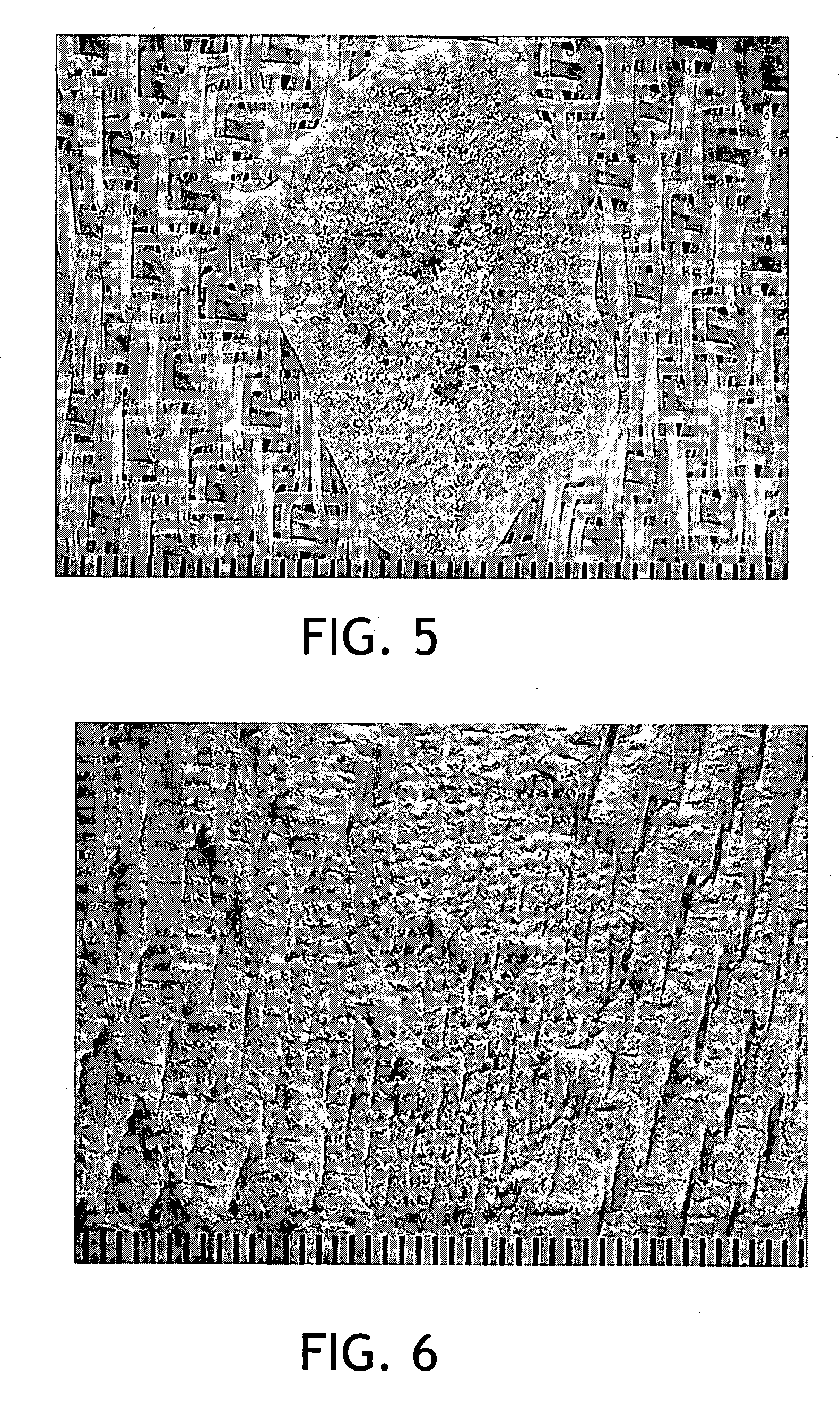Method of making tissue sheets with textured woven fabrics having highlighted design elements
a technology of woven fabrics and tissue sheets, applied in the field of drying tissue sheets, can solve the problems that the texture imparted to the dried tissue sheets can detract from the visibility of decorative elements, and achieve the effects of reducing nesting, increasing the bulk of multi-ply tissue products, and enhancing the roll bulk of tissue products
- Summary
- Abstract
- Description
- Claims
- Application Information
AI Technical Summary
Benefits of technology
Problems solved by technology
Method used
Image
Examples
example 1
[0030] In order to further illustrate the method of this invention, a papermaking fabric was produced comprising a woven textured background sheet-contacting surface and a woven highlight area which had substantially less texture than the background texture. The fabric was woven using thermally stable polyester, allowing the fabric to be used as a throughdrying fabric. The fabric is substantially the same as that shown in FIG. 1. An RTV silicone (Ultra Black by Permatex, Inc., Solon, Ohio) was applied via extrusion within the highlight area on one side of the fabric. The silicone was applied to form a design element raised above the surface plane of the highlight area, as shown in FIG. 3.
[0031] Tissue handsheet blanks, subsequently used in order to simulate papermaking using the above-described fabric, were made using a process similar to that disclosed in U.S. Pat. No. 5,672,248 to Wendt et al., which is hereby incorporated by reference. In particular, a fiber furnish comprising 1...
example 2
[0034] In order to further illustrate the method of this invention, a papermaking fabric was produced comprising a woven textured background sheet-contacting surface and a woven highlight area which had substantially less texture than the background texture. The fabric was woven using thermally stable polyester, allowing the fabric to be used as a throughdrying fabric. The fabric is substantially the same as that shown in FIG. 1. A one component, polyurethane foam (Great Stuff manufactured by Dow Chemical, Inc., of Midland, Mich.) was applied to the highlight area of the fabric. After curing, excess foam was removed to a level substantially the same as the surface plane of the woven textured background sheet-contacting surface, creating a filled highlight area. A design element in the shape of a heart was then sculpted into this filled highlight area by removing selected areas of foam using a high-speed rotary tool (Dremel hand tool with attached cutter bit #125 by Robert Bosch Tool...
PUM
| Property | Measurement | Unit |
|---|---|---|
| Length | aaaaa | aaaaa |
| Fraction | aaaaa | aaaaa |
| Area | aaaaa | aaaaa |
Abstract
Description
Claims
Application Information
 Login to View More
Login to View More - R&D
- Intellectual Property
- Life Sciences
- Materials
- Tech Scout
- Unparalleled Data Quality
- Higher Quality Content
- 60% Fewer Hallucinations
Browse by: Latest US Patents, China's latest patents, Technical Efficacy Thesaurus, Application Domain, Technology Topic, Popular Technical Reports.
© 2025 PatSnap. All rights reserved.Legal|Privacy policy|Modern Slavery Act Transparency Statement|Sitemap|About US| Contact US: help@patsnap.com



